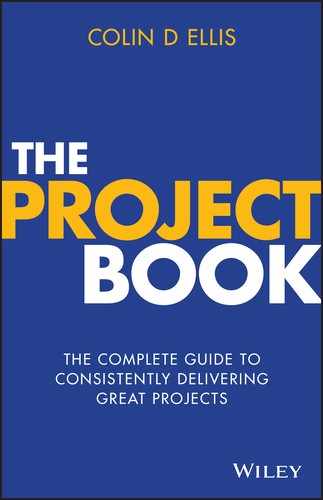CHAPTER 65
MAKE QUICK (NOT HASTY) DECISIONS
Victor Vroom and Arthur Jago believe the most effective leaders are able to make prompt decisions in times of crisis and uncertainty. They cite the example of Admiral Horatio Nelson’s decision making ‘under the almost unimaginably difficult and confusing conditions of a sea battle’ (Pocock, 1987). But, they go on, ‘decisiveness is also important under normal conditions. Mintzberg (1973) observed that managers are involved in decision making all day long, and the quality of their decisions accumulates when they act decisively’.
I remember speaking to a peer of mine not long after I’d been promoted to my first senior management position. Our boss had been pressing us to make decisions quickly and decisively as we had a large transformation program to deliver and couldn’t afford to mess around. The conversation went something like this:
ME: ‘How do you make quick decisions?’
HIM: ‘One word.’
ME: ‘What’s that?’
HIM: ‘Experience.’
ME: ‘How do I get experience?’
HIM: ‘Wrong decisions.’
Which filled me with a huge amount of confidence. The point he was making — in a not very helpful way, it has to be said — was that in order to make quick decisions, you’re going to get a few wrong from time to time.
That’s not to say that you make hasty decisions — that’s a different kettle of fish.
Paul C. Nutt based his important book Why Decisions Fail on an examination of decision making over a 20-year period. In his view, entrepreneurs were responsible for a great deal of poor decision making in the 1980s and 1990s because they perpetuated a myth that all decisions needed to be made quickly, which in turn led to many catastrophic decisions. Just think of all those who went out and bought a pair of MC Hammer pants or a Sinclair C5 electric car. Huge mistake.
And the problem, as he sees it, is compounded now that we’re expected to respond immediately to emails and texts, without having time to think about the consequences. Nutt believes more than half the decisions we make will fail for one reason or another. He offers some useful guidelines on how to make quick but measured decisions:
- Personally manage your decision-making process. Decisions are most successful when managers take control of them based on the information they receive, rather than leaving it to the subject matter experts.
- Search for understanding. By getting more detail on the issues being addressed and what it is that needs fixing, you reduce the risk of reacting to something that may not be the root cause of the problem.
- Establish your direction with an intervention and an action. Intervention establishes the reasoning for action; an objective (the stated outcome, such as we need to have something built in one month’s time) opens up the possibilities for other ideas.
- Identify more than one option. The more options you have, the better the decision you’ll make. Every option you discard enhances the value of the option you’ve chosen to explore further. As Simon Sinek reasons in Start with Why, ‘Our behaviour is affected by our assumptions or our perceived truths. We make decisions based on what we think we know’. Gathering more options mitigates this risk.
- Stress idea creation and implementation. It’s not just about getting things done quickly; it’s also about ensuring there’s no bias towards one idea when another might be better (for example, reusing something you already have rather than developing something new) before implementing.
- Deal with barriers to action. The best way to do this is to involve everyone in the decision-making process from the start. However, where there are still barriers you need to act swiftly to remove them in order to progress.
The Agile Manifesto expands on this need for quick decisions. The 12 principles that underpin the manifesto are as follows:
- We trust intrinsic motivation.
- We proof by working product only.
- We prioritise customer delight.
- We welcome change.
- We prefer face-to-face communication.
- We deliver early and often.
- We grow a system.
- We make no mistakes — we learn.
- We thrive on daily collaboration.
- We design technical excellence.
- We sustain a constant pace.
- We love simplicity.
What agility requires more than anything else is a different mindset — what Carol Dweck calls a growth mindset. One that thinks anything is possible, that challenges convention and looks for better, smarter ways to do things. This is never more needed than in decision making.
For those who like to understand all the details before committing, it’s important to know just enough to inform a good decision. Using the agile principles as a guide, delivering early and often requires quick decisions, as does sustaining a constant pace. Organisations that crave agility (not just a shortcut) need to embrace quick decision making and support a solution-focused culture.
For the most part, you’ll use your steering committee as a sounding board and even involve them in this decision-making process. Some organisations require a voting system (a quorum) when it comes to decisions, so it’s important for you to get clear on the rules. When everyone has the same information it can work really well. However, demanding that you take action only when everyone is in agreement can cause problems. It might have worked well for the Beatles (four positive votes were required in 1966 for them to agree to something, which is why they stopped touring), but it’s not so efficient for projects.
With quick decisions, you take as long as you need and no longer to make the best decision you can. So please, please, please me and make quick decisions, well.
